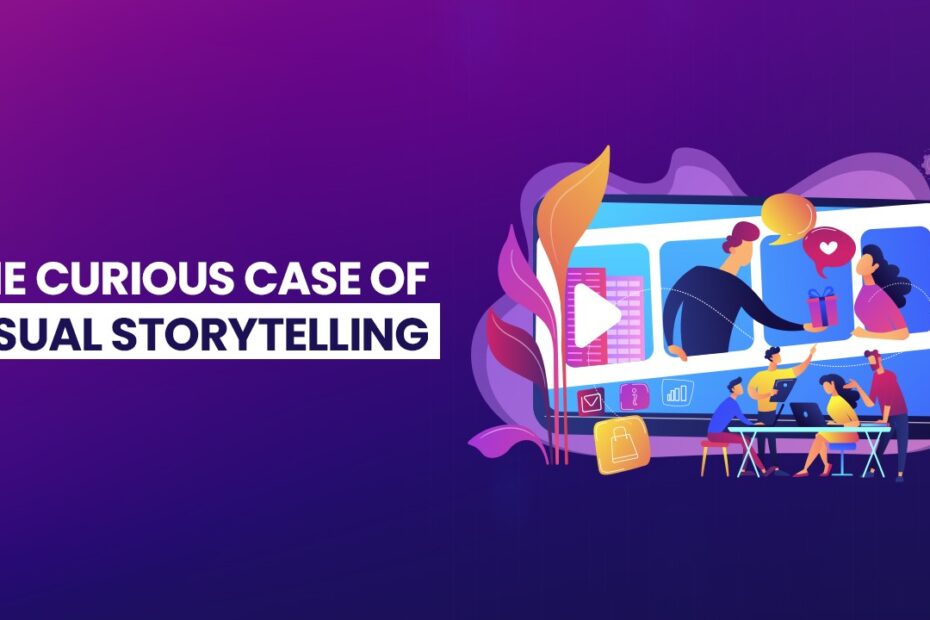In today’s digital age, capturing the attention of online users requires more than just informative content—it demands engaging visual storytelling in web design. Visual storytelling has emerged as a powerful tool in web design, allowing brands to convey their message, evoke emotions, and establish a memorable connection with their audience. In this blog post, we’ll explore the significance of visual storytelling in web design, its benefits, and showcase examples of websites that excel in this art form.
The Significance of Visual Storytelling in Web Design
Visual storytelling involves using images, videos, graphics, and other visual elements to narrate a compelling story. In web design, it goes beyond mere decoration; it’s about creating an immersive and memorable user experience. Here’s why visual storytelling is crucial:
- Capturing Attention: In a crowded digital landscape, captivating visuals can grab users’ attention and entice them to explore further.
- Communicating Brand Identity: Visuals can convey the essence of your brand, its values, and personality more effectively than text alone.
- Eliciting Emotions: Images have the power to evoke emotions and create a personal connection with the audience, fostering engagement and loyalty.
- Enhancing Understanding: Complex concepts or ideas can be simplified and made more digestible through visual storytelling, aiding comprehension and retention.
Benefits of Visual Storytelling in Web Design
- Increased Engagement: Visuals are more engaging and shareable than text, leading to higher user engagement and interaction.
- Improved Brand Recall: Memorable visuals leave a lasting impression, increasing brand recall and recognition among users.
- Enhanced User Experience: Visual storytelling enhances the user experience by making content more engaging, intuitive, and enjoyable to consume.
- Higher Conversion Rates: Compelling visuals can influence user behavior and drive conversions, whether it’s signing up for a newsletter, making a purchase, or sharing content.
Examples of Websites Harnessing Visual Storytelling
- Airbnb: Airbnb’s website uses stunning visuals to tell stories about travel experiences around the world. High-quality images of unique accommodations, scenic destinations, and memorable experiences evoke a sense of wanderlust and adventure, enticing users to explore further.
- Nike: Nike’s website is a masterclass in visual storytelling, showcasing the brand’s values of athleticism, innovation, and empowerment. Through dynamic videos, striking imagery, and immersive interactive elements, Nike conveys powerful narratives that resonate with its audience.
- Patagonia: Patagonia’s website combines breathtaking outdoor photography with compelling storytelling to promote its commitment to environmental conservation and sustainable practices. Through visually captivating campaigns and immersive multimedia content, Patagonia inspires its audience to connect with nature and take action.
- National Geographic: National Geographic’s website transports visitors to distant lands and extraordinary adventures through stunning photography, immersive videos, and captivating stories. From wildlife documentaries to cultural explorations, National Geographic captivates audiences with visually rich content that educates, entertains, and inspires.
- Tesla: Tesla’s website showcases its cutting-edge electric vehicles and innovative technology through sleek design, high-quality visuals, and interactive features. Through immersive experiences like virtual tours, product demonstrations, and cinematic presentations, Tesla engages users and communicates its vision for the future of transportation.
Conclusion
Visual storytelling is a powerful tool in web design, allowing brands to create immersive, memorable, and impactful experiences for their audience. By harnessing the power of visuals to convey compelling narratives, evoke emotions, and communicate brand identity, websites can captivate users, drive engagement, and foster meaningful connections. The examples of Airbnb, Nike, Patagonia, National Geographic, and Tesla demonstrate how effective visual storytelling can elevate the user experience and differentiate brands in a competitive digital landscape. As you design or revamp your website, consider the role of visual storytelling in capturing the hearts and minds of your audience.

